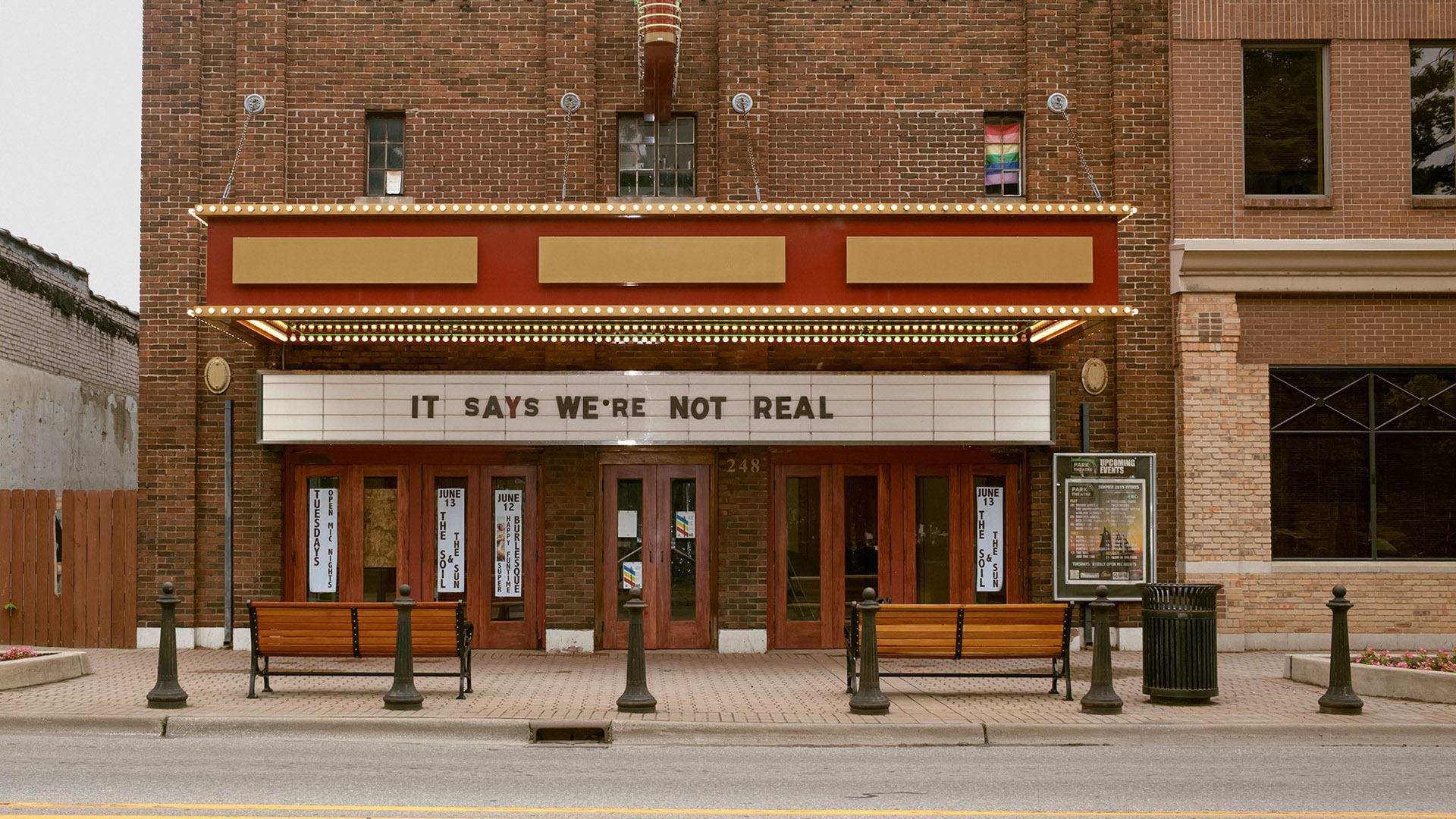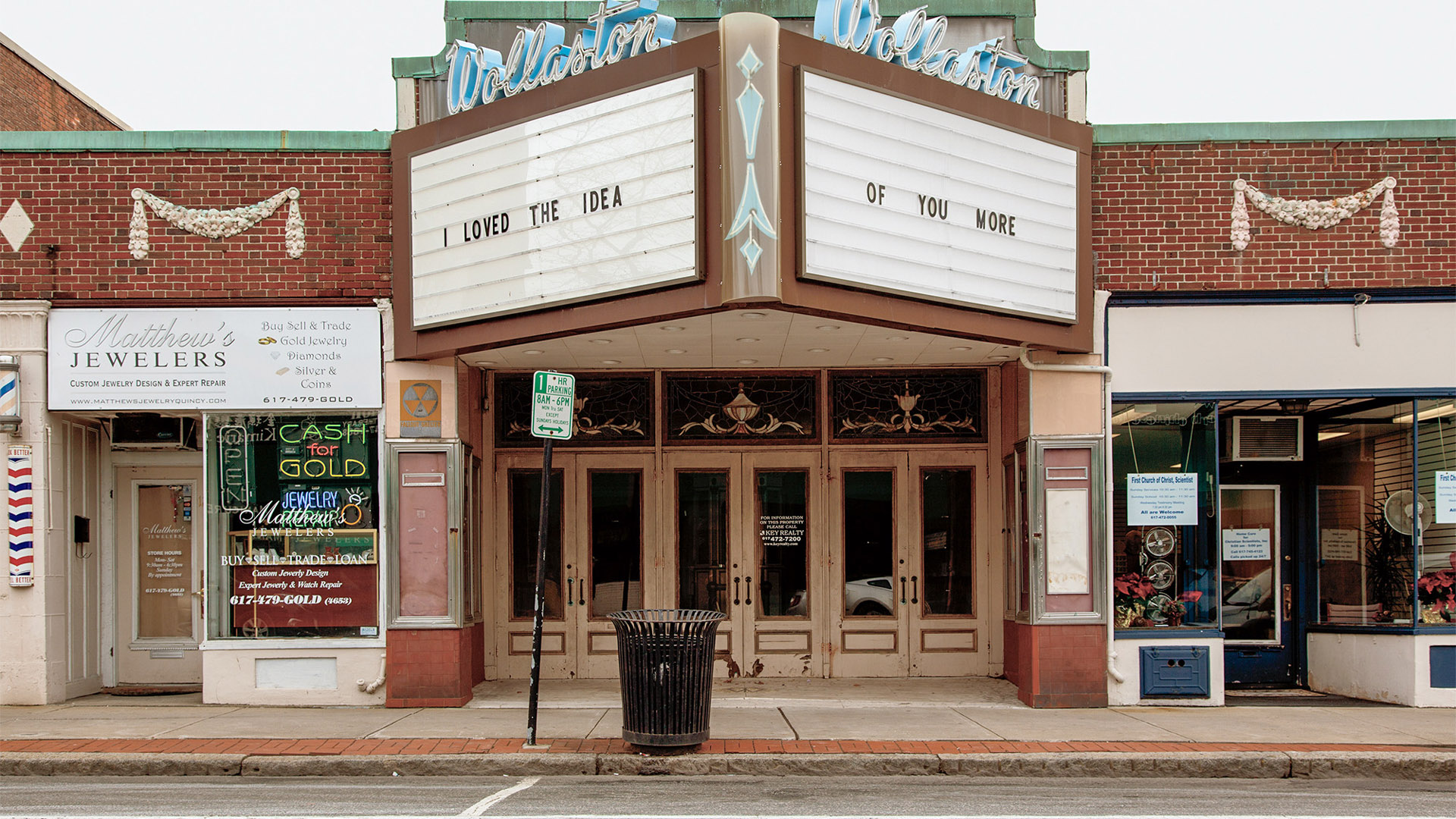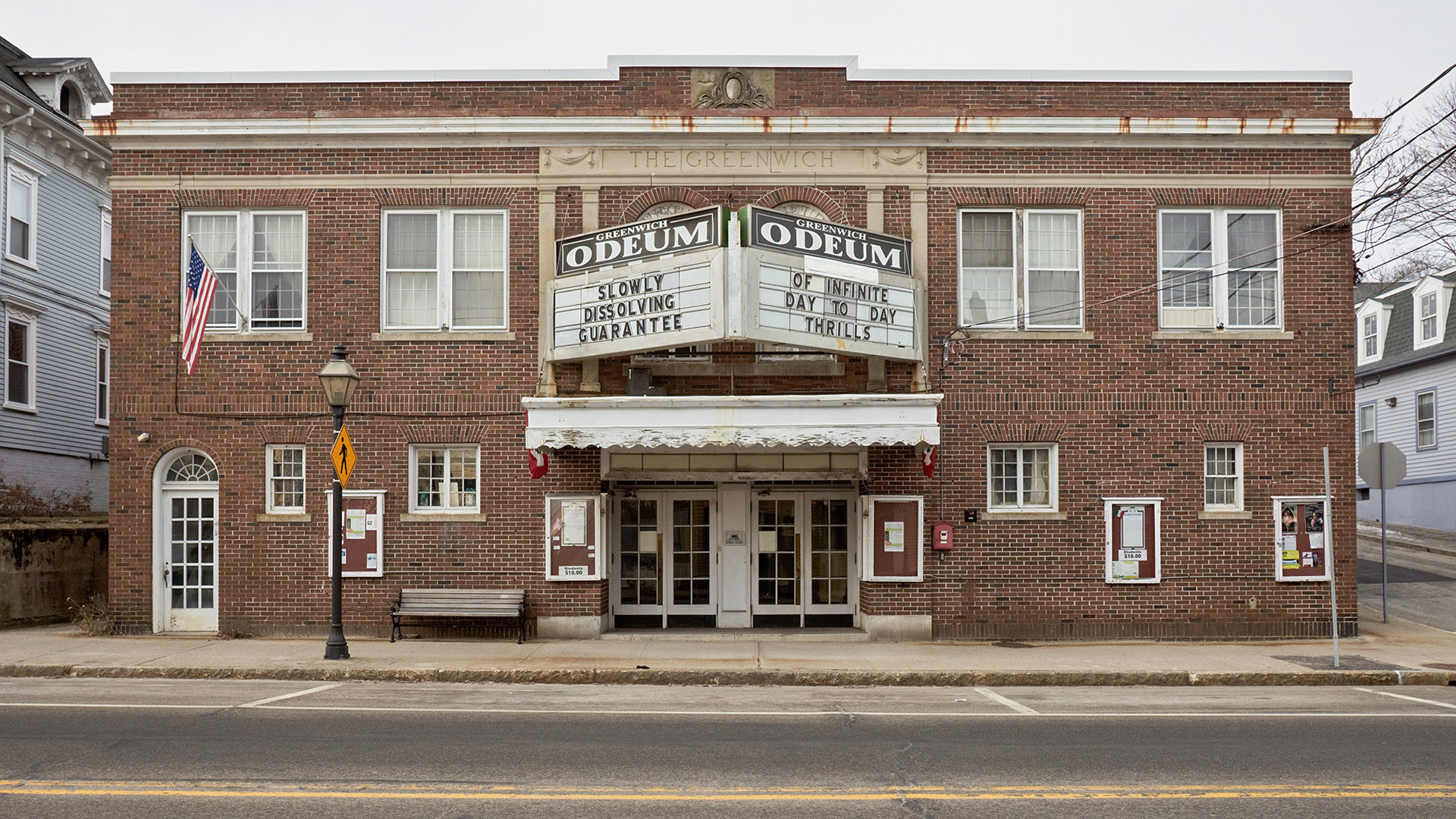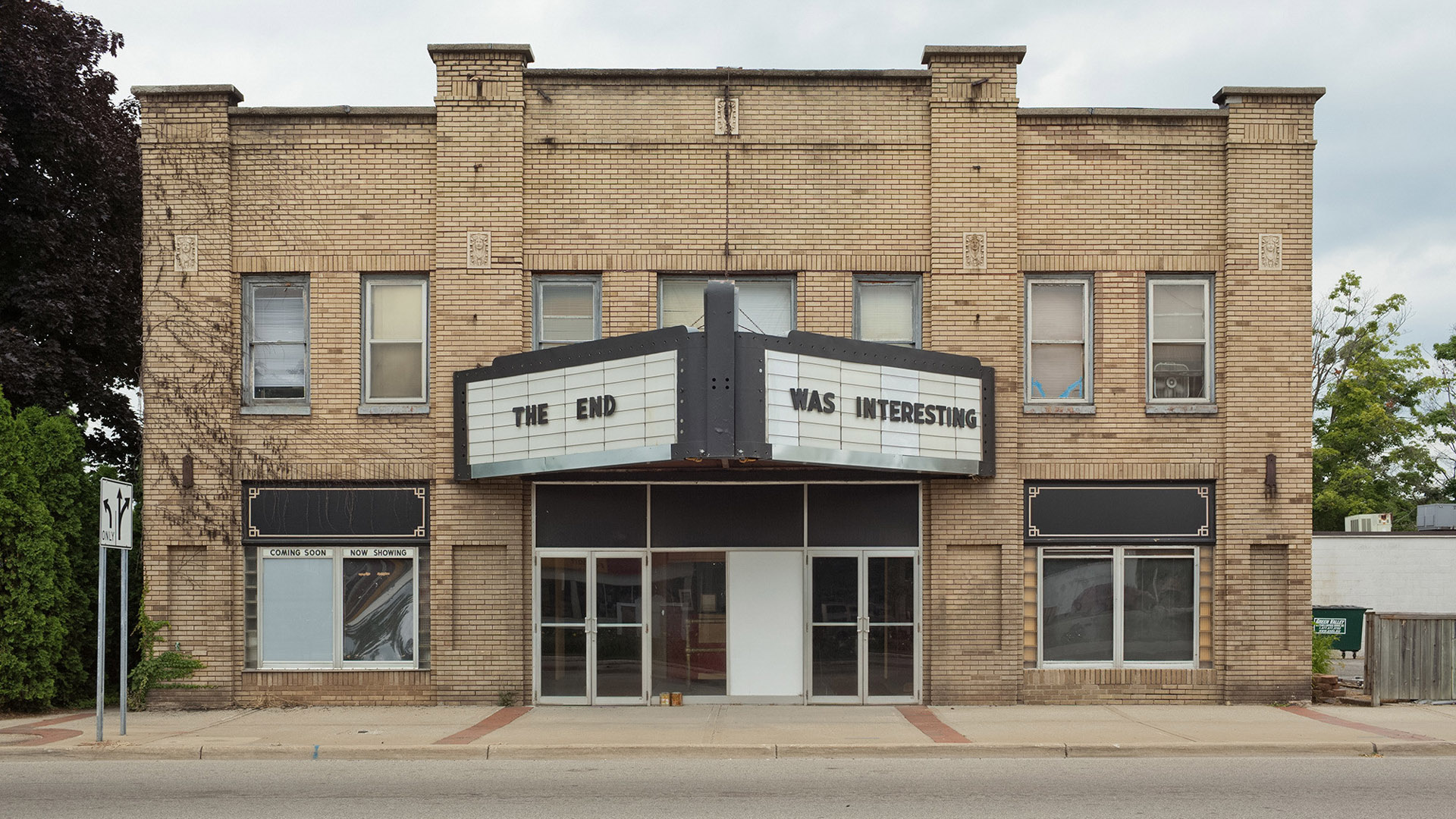Romance
Epigraphic video essays are a mainstay of videographic criticism, especially of its academic variety. Epigraphic video essayists appropriate excerpts from films and then use that footage as a canvas for the on-screen text they add. Visual artist Victoria Crayhon uses a similar strategy. But instead of appropriating movies, she borrows movie theaters.
Crayhon places short texts on the marquees of theaters, sometimes without first asking permission to do so. The texts are fleeting, as often they are removed sooner rather than later by the marquee’s owner. She documents their ephemeral existence in photos and short videos, such as the one above.
The nature of her short texts is very different from the quotes encountered on epigraphic video essays (those are sourced from theoretical writings on film). In Crayhon’s case, the texts are deliberately ambiguous and decidedly personal. As she puts it, they “are formulated to read as though they are public diary entries referencing banal realities of self-absorption”. The contrast with the usual texts on these marquees (pompous film titles and inflated marketing language) is stark.
Even though they don’t contain obvious references to cinema, Crayhon’s texts can often be interpreted as intriguing comments on the moviegoing experience.
Some read as sly observations on the ideality of films (“I loved the idea of you more”, or “It says we’re not real”). Others can be seen as wry observations about the waning popularity of cinema (“The end was interesting” on the marquee of an abandoned theater). When seen from that perspective, Crayhon’s interventions can be seen as a form of culture jamming that uses videographic strategies.





